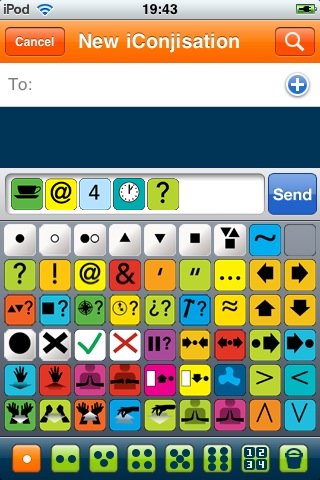
A letter is a written message conveyed from one person to another through a medium. Something epistolary means that it is a form of letter writing. The term usually excludes written material intended to be read in its original form by large numbers of people, such as newspapers and placards, although even these may include material in the form of an "open letter". The typical form of a letter for many centuries, and the archetypal concept even today, is a sheet of paper that is sent to a correspondent through a postal system. A letter can be formal or informal, depending on its audience and purpose. Besides being a means of communication and a store of information, letter writing has played a role in the reproduction of writing as an art throughout history. Letters have been sent since antiquity and are mentioned in the Iliad. Historians Herodotus and Thucydides mention and use letters in their writings.
The comma, is a punctuation mark that appears in several variants in different languages. It has the same shape as an apostrophe or single closing quotation mark in many typefaces, but it differs from them in being placed on the baseline of the text. Some typefaces render it as a small line, slightly curved or straight, but inclined from the vertical. Other fonts give it the appearance of a miniature filled-in figure 9 on the baseline.
The colon, :, is a punctuation mark consisting of two equally sized dots aligned vertically. A colon often precedes an explanation, a list, or a quoted sentence. It is also used between hours and minutes in time, between certain elements in medical journal citations, between chapter and verse in Bible citations, and, in the US, for salutations in business letters and other formal letter writing.
In English writing, quotation marks or inverted commas, also known informally as quotes, talking marks, speech marks, quote marks, quotemarks or speechmarks, are punctuation marks placed on either side of a word or phrase in order to identify it as a quotation, direct speech or a literal title or name. Quotation marks may be used to indicate that the meaning of the word or phrase they surround should be taken to be different from that typically associated with it, and are often used in this way to express irony. They are also sometimes used to emphasise a word or phrase, although this is usually considered incorrect.
In the field of publishing, the pilcrow (¶) is a handwritten and a typographical glyph used to identify a paragraph. In editorial production the pilcrow typographic character also is known as the paragraph mark, the paragraph sign, the paragraph symbol, the paraph, and the blind P.
Programming style, also known as coding style, is the manner in which source code is written that results in distinctive characteristics of the code; the resulting code style.
A paragraph is a self-contained unit of discourse in writing dealing with a particular point or idea. Though not required by the orthographic conventions of any language with a writing system, paragraphs are a conventional means of organizing extended segments of prose.
In computer programming, indentation style is a convention, a.k.a. style, governing the indentation of blocks of source code. An indentation style generally involves consistent width of whitespace before each line of a block, so that the lines of code appear to be related, and dictates whether to use space or tab characters for the indentation whitespace.
YAML is a human-readable data serialization language. It is commonly used for configuration files and in applications where data are being stored or transmitted. YAML targets many of the same communications applications as Extensible Markup Language (XML) but has a minimal syntax that intentionally differs from Standard Generalized Markup Language (SGML). It uses Python-style indentation to indicate nesting and does not require quotes around most string values.
The off-side rule describes syntax of a computer programming language that defines the bounds of a code block via indentation.
In the written form of many languages, indentation describes empty space, a.k.a. white space, used around text to signify an important aspect of the text such as:
Poste restante, also known as general delivery in North American English, is a service where the post office holds the mail until the recipient calls for it. It is a common destination for mail for people who are visiting a particular location and have no need, or no way, of having mail delivered directly to their place of residence at that time.
A lightweight markup language (LML), also termed a simple or humane markup language, is a markup language with simple, unobtrusive syntax. It is designed to be easy to write using any generic text editor and easy to read in its raw form. Lightweight markup languages are used in applications where it may be necessary to read the raw document as well as the final rendered output.

An address is a collection of information, presented in a mostly fixed format, used to give the location of a building, apartment, or other structure or a plot of land, generally using political boundaries and street names as references, along with other identifiers such as house or apartment numbers and organization name. Some addresses also contain special codes, such as a postal code, to make identification easier and aid in the routing of mail.
A salutation is a greeting used in a letter or other communication. Salutations can be formal or informal. The most common form of salutation in an English letter includes the recipient's given name or title. For each style of salutation there is an accompanying style of complimentary close, known as valediction. Examples of non-written salutations are bowing, waving, or even addressing somebody by their name. A salutation can be interpreted as a form of a signal in which the receiver of the salutation is being acknowledged, respected or thanked. Another simple but very common example of a salutation is a military salute. By saluting another rank, that person is signalling or showing his or her acknowledgement of the importance or significance of that person and his or her rank. Some greetings are considered vulgar, others "rude" and others "polite".
A valediction, or complimentary close in American English, is an expression used to say farewell, especially a word or phrase used to end a letter or message, or a speech made at a farewell.
In economics, a letter of transmittal is a type of cover letter that accompanies a document, such as a financial report or security certificate.

iConji is a free pictographic communication system based on an open, visual vocabulary of characters with built-in translations for most major languages.

Optical margin alignment outdents letters like A, V, W, Y, and punctuation into the margins to align the text border optically. Some users remark that it makes the text margin look crooked, but this is because text frames or margin guides are visible. If text frames are not visible, e.g. in print preview, or when printed, the edge of a block of text looks more even if optical margin alignment is enabled.

An ARRL radiogram is an instance of formal written message traffic routed by a network of amateur radio operators through traffic nets, called the National Traffic System (NTS).



